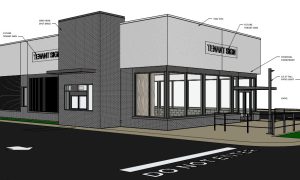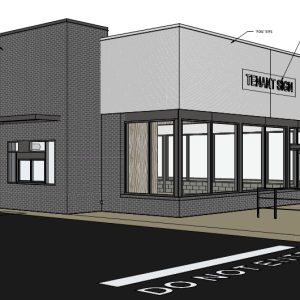 WESTFIELD – A peer review by an outside expert on the plan to build an Aldi’s Market at 231 East Main St., requested by the Westfield Conservation Commission, determined that with the introduction of the building, increases in flood stage or velocity “would be minimal and not measurable” during a 100-year flood event.
WESTFIELD – A peer review by an outside expert on the plan to build an Aldi’s Market at 231 East Main St., requested by the Westfield Conservation Commission, determined that with the introduction of the building, increases in flood stage or velocity “would be minimal and not measurable” during a 100-year flood event.
Michael Chelminski of Stantec Consulting Services out of Northampton said that the introduction of any structure in flowing water produces an effect.
“If you go stand in a river – with your two legs knee deep and you watch the sand whip around your legs – you’re an obstruction out there,” Chelminski said, one that causes a localized change. He said in this case, a building located in the floodplain out there “amongst a sea of buildings” would probably cause a negligible localized change.
“The proposed development is largely shadowed by buildings south of this – the velocity increases (would be) very small… Legs don’t affect fish 100 feet away,” Chelminski said, adding that another consideration is precedent, and whether other buildings have been required to model.
“Every building increases velocity – so do other buildings, and people walking around,” Chelminski said.
Commissioner Cliff Laraway said there were some major concerns of business owners on Mainline Drive who provided pictures of prior flooding events. Chelminski said he was provided with sketches from a public commentator that noted that. He said the compensatory storage would take care of the increase caused by the new building
“Those buildings out there are all in the floodplain. Designers of those buildings are aware of that. The buildings all have floodproofing, with factors of safety that would go into a building,” Chelminski said, adding, “Ultimately if you put 8 feet of moving water out there, it’s going to be damaging. Given the available information that damage will be catastrophic out there regardless of a new building.”
Chelminski also said that the compensatory flood storage actually exceeds the performance standard, and the location in an agricultural field across the Little River appeared to be good. He did provide some suggestions, such as erosion and sediment controls on the bank, and a track pad to prevent vehicles carrying dirt off the site during construction.
“I for one feel a lot more comfortable with this project,” said Conservation Coordinator Meredith Borenstein following the discussion. She also asked Rob Levesque to provide a list of trees that will be taken down during construction of the hydraulic connection, and in particular asked him to save a healthy white oak on property, if possible, which Levesque said he would try to do.
The commission and owners also talked about possibly transferring the field, which Levesque had said will be used for future compensatory storage for building projects, for conservation use and wildlife habitat.
The meeting was continued to Jan. 26 to add the recommendations to the plan.





